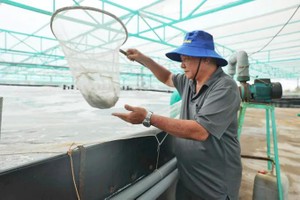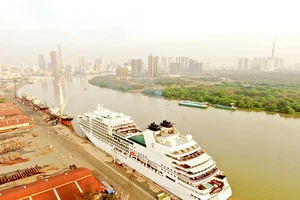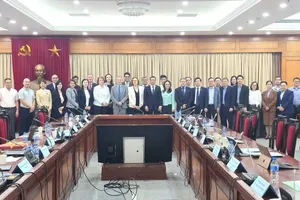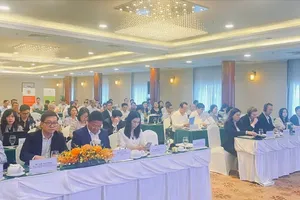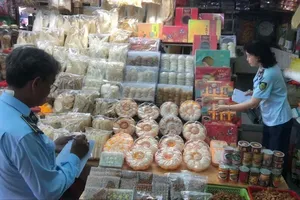 |
However, ever since the outbreak of the Covid-19 pandemic and other difficulties created by the global slowdown and rising inflation, the economy of HCMC has fallen drastically to only 15.46 percent in 2021, 15.55 percent in 2022, and now showing the lowest increase of only 0.7 percent in the first quarter of 2023.
It is true that the economy of HCMC is more vulnerable and more likely to be affected by changes in market conditions than many other provinces across the country. But it must also be acknowledged that the economy of HCMC has revealed its internal limitations. To return back to its former status, HCMC must comprehensively evaluate its entire economic structure and reconstruct its strategies towards more resilience in the future.
Internal limitations
While disbursement of public investment and government spending is rated by international organizations and domestic agencies as one of the most important drivers for the economic growth of Vietnam in 2023, in the first quarter, HCMC disbursed only 2 percent of public investment capital compared to national average of 9.7 percent. The decline of the real estate industry to 16 percent can be in large part related to sluggish legal procedures, while the drastic removal of the authorities is not yet clear. Therefore, in the ranking of the Provincial Competitiveness Index (PCI) in 2022, HCMC ranks at 27 out of 63 provinces, and the dynamic index of government agencies of HCMC ranks at 62 out of 63 provinces.
Such figures show that the growth momentum in HCMC is not entirely due to external factors but mostly to internal factors. The slow disbursement of public investment capital and handling of procedures to remove difficulties for enterprises is due to a slow mechanism, because officials and employees are afraid of taking responsibility, and do not dare to act, give advice, or offer a proposal.
This is an issue recognized by the leaders in HCMC as a challenge that needs to be overcome. HCMC urgently needs mechanisms for government leaders at all levels to be bold, and proactive, and drastically implement schemes so as to create a safe and attractive investment environment. These mechanisms will help HCMC to escape being termed as a declining economy.
HCMC contributes up to 15 percent towards the GDP and 30 percent towards the state budget of the country. However, HCMC has to follow the same regulations, policies, and mechanisms as that of all other localities. As a result, the authority that HCMC has on people, apparatus, budget, resources, investment, culture, education, health, science, and technology is not much different from the regulations applied in other provinces.
When the regulations are too tight and unclear, plus with fear of applying responsibility, it is understandable that decision-making will be delayed and regular written consultations with central ministries and branches will hold back progress. Finally, businesses, investors, and the people as well as the economy of HCMC are affected, which leads to a loss for the whole country.
Reaffirming position
HCMC holds many cards to accelerate growth. These are large-scale investment projects of registered and soon-to-be-implemented private enterprises and foreign-invested enterprises. There is a long list of projects of domestic and foreign investors who are under research and are in the process of completing investment registration procedures in HCMC.
In addition, there are large-scale public investment projects such as inter-regional traffic projects like the HCMC-Moc Bai expressway; the expansion of the HCMC-Long Thanh-Dau Giay expressway; the Ring Road 3; the Ring Road 4; Can Gio international transshipment port; Thu Thiem-Long Thanh light railway; HCMC-Can Tho railway; and the Ben Thanh-Suoi Tien metro. But in order to accelerate these projects, HCMC needs to have outstanding specific mechanisms to speed up the project approval process, and mobilize capital from sources and from the participation of the private sector.
HCMC also has the largest consumer market in the country. The potential for service and tourism development has advantages that few other localities can match. HCMC has the largest number of businesses in the country with more than 210,000 SMEs, 7,300 FDI enterprises, and 387,500 business households. This potential can be exploited more strongly if the business atmosphere and enthusiasm match the desire to compete in the projects.
If HCMC boldly and proactively implements measures to reform the business environment, and investment environment, and solve difficulties and obstacles for businesses and investors, then HCMC can return to its previous rapid growth trajectory and reassert its position as the economic hub and growth engine of the country.
A new Resolution replacing resolution 54 is being developed with the expectation of forming a unique and superior mechanism for HCMC with clear regulations, and a protected cadre who dare to think, dare to do, and dare to act for people, businesses, and investors. From here on there must be step-by-step ways to repel the stagnation of the administrative apparatus, which HCMC leaders have identified as one of the biggest obstacles to economic growth.


